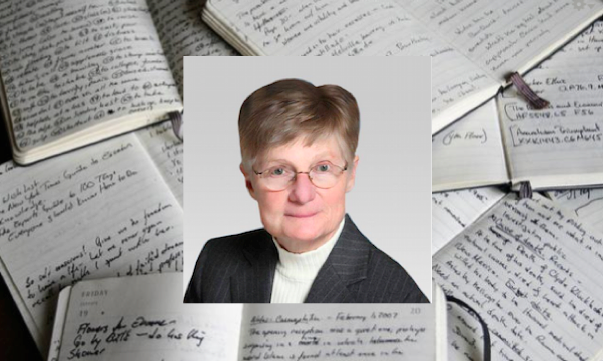Investors in Europe are Recognizing the Need to Become Engaged with China
| For Gabriela Huerta | 0 Comentarios
A week in the UK attending our annual client symposium which was this year focused on China and a long weekend in Berlin highlighted that a year on from the Shanghai stock market crash, investors in Europe are recognizing the need to become engaged with China, albeit they are in no great rush.
It was this week last year that the Shanghai Composite hit its peak as a speculative bubble built around the potential inclusion of the China A share index in the MSCI indices, which would mean, according to the narrative, that a wave of index tracking ‘dumb money’ would be forced to come in regardless of price and valuation. As is so often the case, those buying into a ‘bigger fool’ theory turned out to be the bigger fools themselves. As previously discussed the decision not to include the China A shares triggered a run for the exits, but this was turned into a stampede as the Chinese authorities unfortunately decided to further limit leverage by brokerages the following day. With so much of the Shanghai Composite held by ‘weak hands’ and with the added impact of forced de-leverage, the market followed the old adage of up the staircase but down the lift shaft and the Chinese authorities morphed in the eyes of the western press from arch manipulators to keystone cops almost overnight. A year on and the market has stabilised, albeit at around 40% below those levels.
However, one of the points I made at our China symposium in London two weeks ago was that international investors need to realise that the Chinese stock market, despite its apparent size, does not play the same role in the Chinese economy as the S&P 500 does in the US. It represents only around 7% of household assets and is only really held by around 5% of the population. As such the wealth effect in either direction is relatively minor, while the composition of the index, dominated by state owned enterprises in terms of its market cap weightings, gives us little insight into the dynamics of the Chinese economy. This is a classic case of an increasingly common phenomenon, a belief that because we can measure something it is therefore important and even more that because we can plot the data on a chart, we can therefore infer predictions from it. The same applies to aggregate data such as GDP and inflation. The reality is that half of China is growing too fast and the government is trying to hold back excess leverage and liquidity, while the other half is barely growing at all and the government is trying to keep it ticking over. Clearly we want to have a greater exposure to the former than the latter – although opportunities exist in both areas and as such, at both the equity and the credit level, we continue to believe that this is an environment for stock selection and credit research – the index contains too many of the companies and credits you do not want, particularly if you use market cap weights. After the capitulation from emerging markets and to some extent Asia earlier in the year, the panic has subsided as people take a more considered look at the economics, but flows are still on balance negative, which is leading to a feeling of treading water.
This gives us time to focus on the structural trends and the big story remains the build out of a proper financial services infrastructure and in that sense the development of the bond markets in China are almost certainly a more important first step than the equity market as China moves away from the dominance of the (inefficient) banking system. At our symposium, while many of the clients were interested in understanding more about the prospects for Chinese equities, the potential for infrastructure bonds, corporate bonds and muni-bonds was also of great interest, especially in a world where over $10 trillion of government debt is now yielding less than zero. The notion that China can produce the same product (or perhaps even better) for half the price is coming to financial products as well. Recent announcements have made it even easier for international investors to access Chinese onshore bonds, while Chinese companies continue to issue onshore and redeem offshore bonds. This is a phenomenon we have discussed on previous occasions, not least because it appears in the national accounts as a reduction in foreign exchange reserves, and has been a strong stabilising factor in the market for Asian fixed income.
Perhaps I am spoiled by now living in Asia where there is (generally) a very different approach to work in the service sector. I was interested to see a report out last week based on a study from UBS – commented on here – showing that on average people in Hong Kong work over 50 hours a week – 62% longer than those in Paris. (Note to my colleagues in Paris and HR – I am simply picking the top and bottom cities honestly!) This could be that the people of Hong Kong are keener to earn money to buy ‘stuff’ – the money earned for a 50 hours’ worth of work in Hong Kong is almost enough to buy an iPhone – a good measure of purchasing power given Apple’s pricing model. Whereas the Parisian would have to work a longer week – 42 hours on UBS’s calculation. However, the Hong Kong worker is probably more focussed on trying to pay the rent while generally the cost of living in terms of goods and services is about the same in both cities – this is not true for rent. A three bed apartment in Hong Kong is twice the price of one in Paris. This is changing however. Hong Kong rents are starting to fall, as they are in much of Asia due to excess supply. Although as my colleague Simon Weston pointed out after a trip to Singapore last week, many of the developers are concerned that prices are not clearing properly. It also raises an interesting point about one of the long term fears about robotics – the idea that nobody will have a job and thus there will be significant social unrest. Workers in Hong Kong could work 40% less hours than they do at the moment and still be full time workers on a western European model, not to mention 28-30 days holiday rather than the current average of 17.
Excerpt from AXA’s Market Thinking column by Mark Tinker, Head of Framlington Equities Asia




